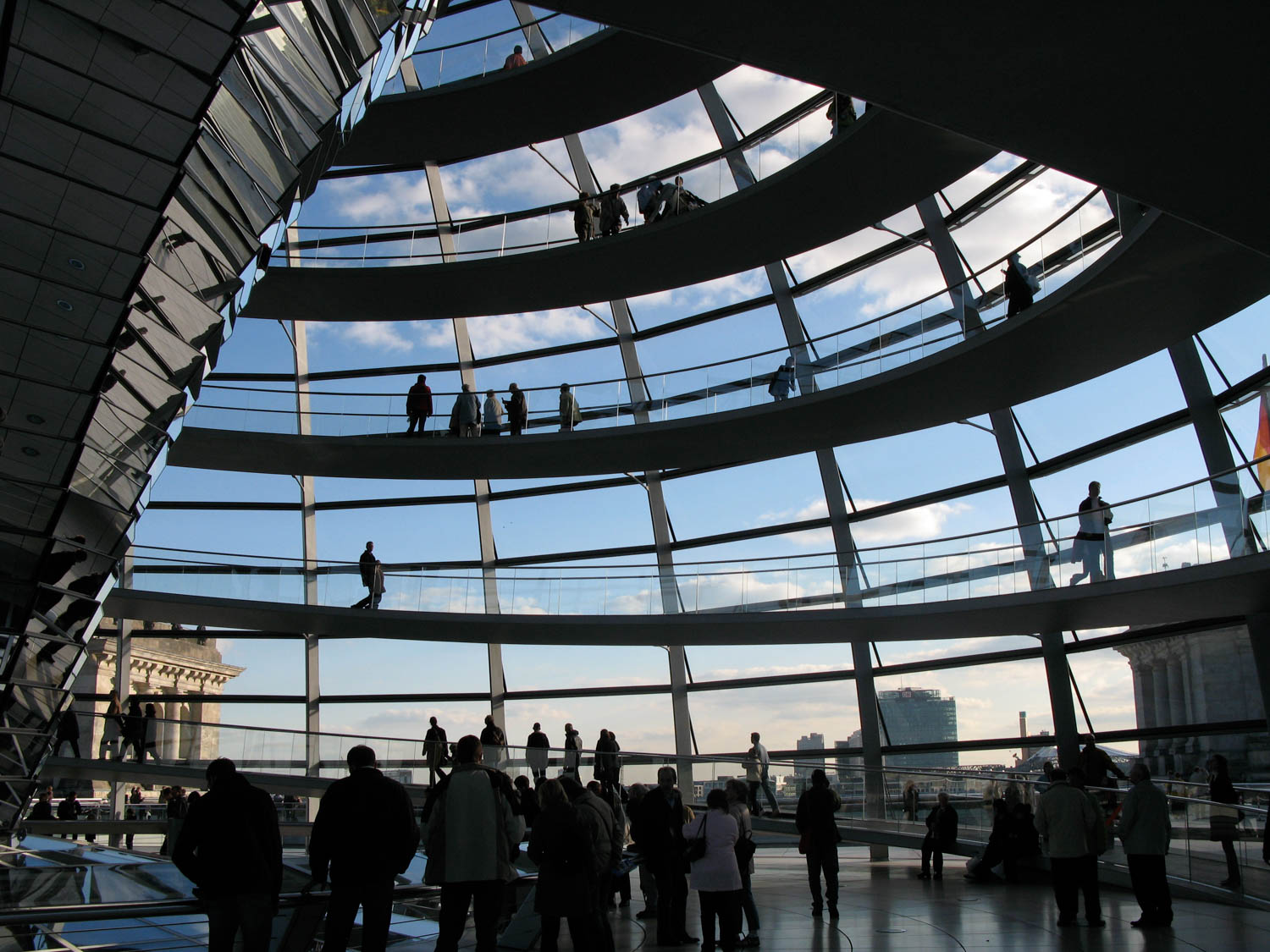Canon
EOS R5 Camera Review: A Flagship Mirrorless Powerhouse for Professionals
and Enthusiasts
I. Introduction
The Canon EOS R5 is a flagship mirrorless camera that has redefined
the boundaries of what a consumer-grade camera can achieve. As part of
Canon’s EOS R system, the R5 is a bold entry into the full-frame
mirrorless market, offering a compelling blend of high-resolution stills
and advanced video capabilities. It is designed for professionals and
high-end enthusiasts who demand the highest performance from their
equipment, whether they are capturing landscapes, portraits, or
cinematic footage.

Source: Wikimedia Commons
Artist: D. Benjamin Miller
License: CC0
This review aims to provide a comprehensive analysis of the Canon EOS
R5, focusing on its performance, specifications, and user experience. We
will explore its key features, evaluate its strengths and weaknesses,
and offer recommendations for potential buyers.
II. Key
Specifications of the Canon EOS R5
Sensor and Image Resolution
At the heart of the Canon EOS R5 is a 45MP full-frame CMOS
sensor, which delivers exceptional detail and sharpness in
still photography. Additionally, the camera offers a
High-Resolution mode that combines multiple images to
produce an 81.9MP output, ideal for large prints or
extreme cropping. This mode is particularly useful for landscape and
architectural photography, where capturing intricate textures and fine
details is essential.
Autofocus System
The R5 features Canon’s Dual Pixel CMOS AF II system
with 5940 AF points and 100% coverage.
This system is known for its accuracy and speed, making it suitable for
fast-moving subjects such as animals, people, and vehicles. The
autofocus is praised for its ability to maintain focus in complex
scenes, especially in wildlife and sports photography.
Videography Capabilities
The R5 is one of the first consumer-grade cameras to offer 8K
video recording, a major industry benchmark. It also
supports 4K 120fps recording, which is excellent for
capturing high-speed footage with smooth motion. The camera includes
Canon Log 3 and HDR support, providing
greater flexibility in post-production color grading.
Body and Design
The R5 has a weather-sealed magnesium alloy body,
making it durable and suitable for use in challenging environments. It
includes dual card slots (CFexpress and SD UHS-II), a
touchscreen LCD, and a vari-angle
display, which enhances usability in various shooting
scenarios. The design is professional-grade, with a comfortable
grip and customizable buttons for efficient
handling.
Battery and Power
The R5 uses the LP-E6NH battery, which is an upgrade
in capacity from earlier models. However, due to the camera’s
high-performance features, especially 8K video
recording, the battery life is relatively short under heavy
use. Users may need to carry multiple batteries for
long sessions or field work.
Connectivity and Features
The camera supports Wi-Fi, Bluetooth, and 5G
connectivity, enabling seamless transfer of images and remote
control. It also includes in-body image stabilization
(IBIS) and the ability to shoot RAW burst at 12
fps, which is ideal for action photography. These features make
the R5 a versatile tool for both stills and video.
III. Performance Analysis
Image Quality
The Canon EOS R5 delivers outstanding image quality
in both 45MP and 81.9MP modes. In 45MP mode, the camera produces
sharp images with a wide dynamic range, making it
suitable for a variety of photography genres. The
High-Resolution mode is particularly impressive for
landscape and architectural photography, where detail
is paramount.
Compared to the Sony A7R IV and Nikon
Z9, the R5 holds its own in terms of resolution and dynamic
range. However, the A7R IV is slightly more refined in low-light
performance, while the Z9 offers a more robust autofocus system for
certain applications.
Autofocus Performance
The R5’s autofocus system is highly advanced, with fast and
accurate tracking of moving subjects. It performs well in
various lighting conditions, including low light, and is particularly
effective for wildlife and sports photography. The
subject tracking capabilities are praised for their ability to maintain
focus on animals and people, even in complex scenes.
Videography Performance
The R5’s 8K video recording is a standout feature,
offering a level of detail that is unmatched in the consumer market.
However, the file sizes are substantial, and users must be prepared for
large storage requirements. The 4K 120fps
footage is equally impressive, with excellent motion
clarity and minimal motion blur.
The Canon Log 3 and HDR support
provide a wide color gamut and dynamic range, which is
beneficial for color grading in post-production. The camera’s
in-camera stabilization is effective for
handheld shooting, although it does introduce a
slight crop factor in video mode.
Speed and Handling
The R5 is capable of RAW burst shooting at 12 fps,
which is suitable for capturing fast-paced action. The buffer
depth is impressive when using CFexpress
cards, allowing for extended bursts without slowing down. The
user interface is responsive and intuitive, with
customizable controls that cater to professional
workflows.
Thermal Management and
Limitations
One of the most notable limitations of the R5 is its thermal
management during 8K video recording. Prolonged use of 8K can
cause the camera to overheat and shut down
automatically, which can be disruptive during long shoots.
While firmware updates have improved this issue, it
remains a notable limitation for users who require
extended 8K recording.
IV. Pros and Cons
Pros
- Exceptional image resolution and detail – The 45MP
sensor offers unparalleled detail for its class. - Advanced autofocus system – Dual Pixel CMOS AF II
with 1,053 AF points ensures fast and accurate focus for both stills and
video. - 8K video recording capability – A major industry
benchmark that sets the R5 apart from many competitors. - Dual card slots and fast data transfer – Provides
redundancy and supports high-speed CFexpress cards. - Excellent ergonomics and customizable controls –
Designed for professionals with a comfortable grip and intuitive
layout.
Cons
- Overheating during extended 8K recording – A known
limitation that can disrupt workflow. - Short battery life under heavy use – The LP-E6NH
battery drains quickly when using high-performance features. - High price point compared to alternatives – The R5
is a premium camera, which may be a barrier for some buyers. - Limited lens selection – As a newer system, the RF
lens lineup is still growing, and some users rely on EF lenses with an
adapter. - Large file sizes from 8K recording –
Requires high-capacity storage and powerful editing systems. - Not ideal for casual or travel photographers due to
weight and complexity.
V. Sample Image
and Video Quality Discussion
Still Photography Samples
The R5’s 45MP sensor produces images with
excellent sharpness and dynamic range, making it ideal
for a wide range of photography genres. The high resolution is particularly useful for large
prints and architectural photography, where
detail is crucial.
The camera performs well in low-light conditions,
with clean ISO performance up to ISO 6400. Beyond that,
noise becomes more noticeable, but it is still acceptable for many
applications. The color accuracy and skin tones are
praised for their natural appearance, especially in portrait
photography.
Videography Samples
The 8K footage is incredibly detailed, but the
large file sizes require high-capacity storage and
powerful editing systems. The 4K 120fps footage is
smooth and clear, making it ideal for capturing fast-moving
subjects.
When using RF lenses with optical image stabilization, handheld shooting is effective, although electronic stabilization introduces a crop factor
in video mode. The Canon Log 3 and HDR
support provide a wide color gamut and dynamic
range, which is beneficial for color grading in
post-production.
VI. Target Audience
The Canon EOS R5 is best suited for the following types of users:
- Landscape and Architectural Photographers: The
45MP resolution is excellent for capturing
detailed scenes, especially for large prints or gallery
exhibitions. - Portrait and Wedding Photographers: The
45MP sensor produces sharp and detailed
portraits with natural skin tones and accurate color
rendering. - Wildlife and Sports Photographers: The Dual
Pixel CMOS AF II system excels in tracking fast-moving
subjects, making the R5 a strong contender for wildlife
and sports photography. - Videographers and Filmmakers: The R5 is a
top-tier option for hybrid shooters, offering
8K and 4K 120fps recording in a single body. - Canon EF Lens Users: The R5 offers
compatibility with EF lenses via the EF-EOS R adapter,
though native RF lenses are recommended for optimal
performance. - Professionals and High-End Enthusiasts: The R5 is
ideal for those who need top-tier performance and
versatility in both stills and video.
However, the R5 may not be the best fit for budget-conscious
users, those who prioritize portability, or
users who require extended 8K video recording without
thermal limitations.
VII. Purchasing
Recommendations
Best Use Cases
- High-end commercial and product photography: The R5
is ideal for commercial and product photography due to its high
resolution and detail. - Cinematic and professional video production: The
8K and 4K 120fps capabilities make it a top choice for
filmmakers and videographers. - Hybrid shooters needing versatility: The R5 is a
great option for photographers who also need a high-performance
video camera.
Lens Compatibility and
Ecosystem
- RF lenses are recommended for optimal performance,
as they are designed specifically for the R5’s mirrorless system. - EF lenses can be used with the Canon EF-EOS
R adapter, which allows for autofocus and image
stabilization in most cases. However, some features may be
limited compared to native RF lenses.
Price vs. Value
The Canon EOS R5 is a premium camera with a high price
tag, often exceeding $3,000 for the body
alone. This is comparable to alternatives
like the Sony A7R IV, though the Nikon Z9 typically costs more, which may offer
different value propositions for certain use cases.
Additionally, the cost of ownership can be high due
to the need for high-speed CFexpress cards, RF
lenses, and extra batteries. For
budget-conscious enthusiasts, this can be a
major deterrent.
VIII.
Actionable Recommendations for Potential Buyers
When to Consider the Canon
EOS R5
- You Need 8K Video or High-Resolution Stills:
The R5 is one of the few consumer-grade cameras that offer 8K
video recording and 45MP stills, making it ideal for high-end
photography and videography. - You Value Canon’s Autofocus System and Color
Science: The Dual Pixel CMOS AF II and
Canon’s color rendering are among the best in the
industry, especially for portrait and wildlife
photography. - You Are a Hybrid Shooter: The R5 is a
versatile all-in-one camera that can handle
both stills and video, reducing the need for multiple
devices. - You Prefer Canon’s Ecosystem: If you already use
EF lenses, the R5 offers compatibility and
performance with the EF-EOS R adapter, though
native RF lenses are recommended for optimal
results.
When to Consider
Alternatives
- You Are Budget-Conscious: The R5 is a
premium camera, and the cost of lenses and
accessories can be prohibitive. Consider more
affordable options like the Sony A7R IV or
Nikon Z8. - You Require Extended 8K Recording: If your workflow
involves long 8K video sessions, the R5’s
thermal limitations may be a deal-breaker. Look into
cameras with better heat dissipation, such as the
Nikon Z9. - You Need Better Battery Life: The R5’s
short battery life under heavy use may not suit
long outdoor shoots or travel photography. Cameras like
the Sony A7S III or Panasonic S5 II
offer better power efficiency. - You Prefer a More Mature Lens Ecosystem: If you
want a wider selection of native lenses, consider
Sony or Nikon, whose lens lineups are more
established.
IX. Conclusion
The Canon EOS R5 is a flagship mirrorless camera
that excels in both still photography and videography.
Its 45MP sensor, 8K video recording,
and advanced autofocus system make it a top
choice for professionals and enthusiasts. The
high resolution is a standout feature for
landscape and architectural photography, while the
vari-angle display and lens-based image stabilization enhance
versatility and usability.
However, the R5 is not without its limitations. The
thermal management issues during 8K recording,
short battery life, and high cost of
ownership are important factors to consider.
Additionally, the RF lens ecosystem is still expanding,
which may require reliance on EF lenses and adapters
for some users.
If you are a landscape, portrait, or wedding
photographer who needs high-resolution images,
or a filmmaker who wants 8K and 4K 120fps
capabilities, the R5 is an excellent option.
For hybrid shooters, it offers the
versatility to handle both stills and video with
ease.
Ultimately, the Canon EOS R5 is a powerful and versatile
camera that is well worth the investment for
those who can afford it and need its advanced features.
For others, alternatives may offer better value
depending on their specific needs and budget.





